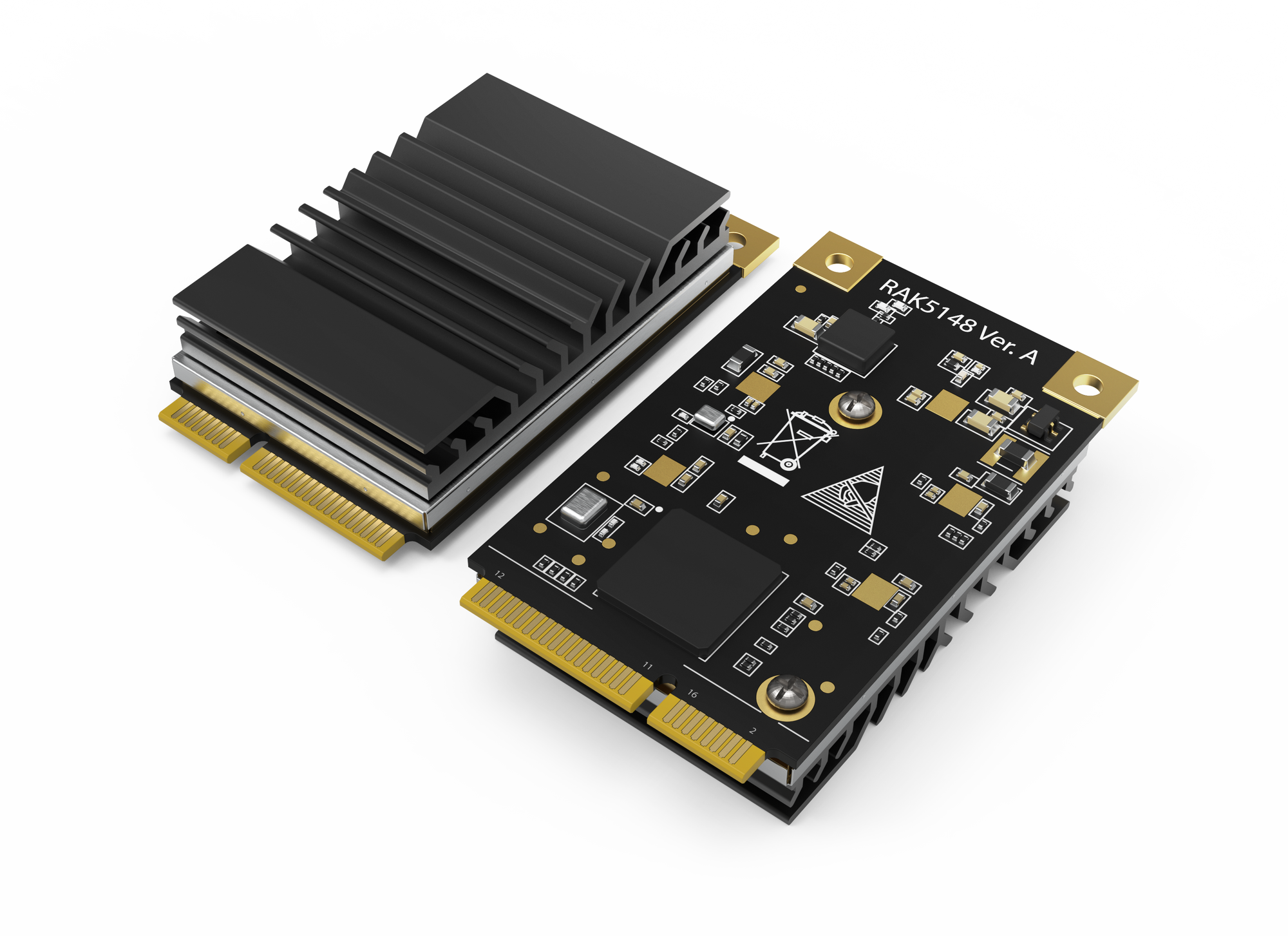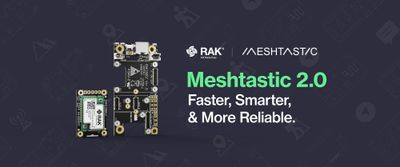Utilize The Worldwide Free 2.4 GHz Band for Your LoRa IoT Projects with RAK5148!
2.4 GHz mini PCIe Concentrator Module for LoRa Based on SX1280
When you hear of the 2.4 GHz band you may think of Wi-Fi, Bluetooth, or even Zigbee. And you will be correct. Your smartphone, home router, and many home automation devices use it. Smartwatches, security cameras, smart lights, and even your drone video stream are using it to instantly transmit huge amounts of data at a fairly close distance.
Traditionally, LoRaWAN has operated in sub-gigahertz frequency bands, such as 433 MHz or 915 MHz. While these bands provide good coverage and long-range capabilities, they have some limitations, such as spectrum availability and interference from other devices.
The LoRa technology has been extended to operate in the 2.4 GHz frequency band to address these limitations. It is more widely used and provides more spectrum availability, which can help to alleviate the spectrum scarcity issues that can arise in sub-gigahertz frequency bands.
The 2.4 GHz band is a part of the ISM (Industrial, Scientific, and Medical) radio band and is available for unlicensed use globally. No matter where you travel or move, you can use the local Wi-Fi network, or buy Bluetooth headphones from the nearest store without worrying that they won’t be compatible due to the different regions’ wireless regulations.
To utilize the advantages of that shift, we are presenting the RAK5148 mini PCIe form factor module for LoRa operating on the 2.4 GHz band. Based on the Semtech SX1280 chip, it provides long-range communication, high sensitivity, the ability to withstand high interferences, and support LoRa, FLRC, and (G)FSK modulations.

Pros and cons of considering the RAK5148 LPWAN 2.4 GHz concentrator module
Let’s see some of the benefits of the LoRa technology and LoRaWAN protocol at the 2.4 GHz band compared to the common regional bands in the sub-GHz field.
Pros | Cons |
|
|
Another advantage of 2.4 GHz LoRaWAN is its ability to coexist with other wireless technologies that use the same frequency band, such as Wi-Fi and Bluetooth. It can be beneficial in environments where multiple wireless technologies are in use because it reduces the risk of interference and enables the deployment of LoRaWAN networks in a wider range of settings.
The RAK5148 mini PCIe gateway module provides a high level of security, with support for AES-128 encryption. This ensures that data is transmitted securely between devices and the back-end server. The module also has a small form factor, which allows it to be easily integrated into existing IoT devices, and low power consumption, which makes it ideal for battery-powered IoT devices adding 2.4 GHz LoRa capabilities.
To make the RAK5148 2.4 GHz LoRaWAN concentrator module even more competitive, we added a power amplifier that brings up the TX power to up +27dBm.
The RAK5148 is based on the SX1280 chip, a highly integrated, low-power RF transceiver operating in the 2.4 GHz frequency range. The SX1280 chip provides high sensitivity and selectivity, making it ideal for long-range, low-power communication in noisy and interference-prone environments.
RAK5148 LPWAN 2.4 GHz Concentrator module for LoRaWAN key features
- mPCIe form factor
- 3.3 V power supply
- Tx power up to 27 dBm
- Rx sensitivity down to -132 dBm @ SF12 BW 203 KHz
- SPI or USB interface
- Optional Built-in ZOE-M8Q GPS module
- Power consumption:
- TX mode at 27 dBm — 810 mA
- RX mode — 179 mA
You can see that overall, the choice of the frequency band for LoRa technology depends on the application’s specific requirements. While 2.4 GHz LoRa offers advantages such as higher data rates and more frequency channels, it also has drawbacks such as a shorter range, higher susceptibility to interference, and higher power consumption.
The new RAK5148 2.4 GHz LoRa concentrator module offers a solution for IoT applications that require high data rates and more frequency channels. This module is an excellent option for developers and businesses looking to create reliable and efficient IoT networks.





